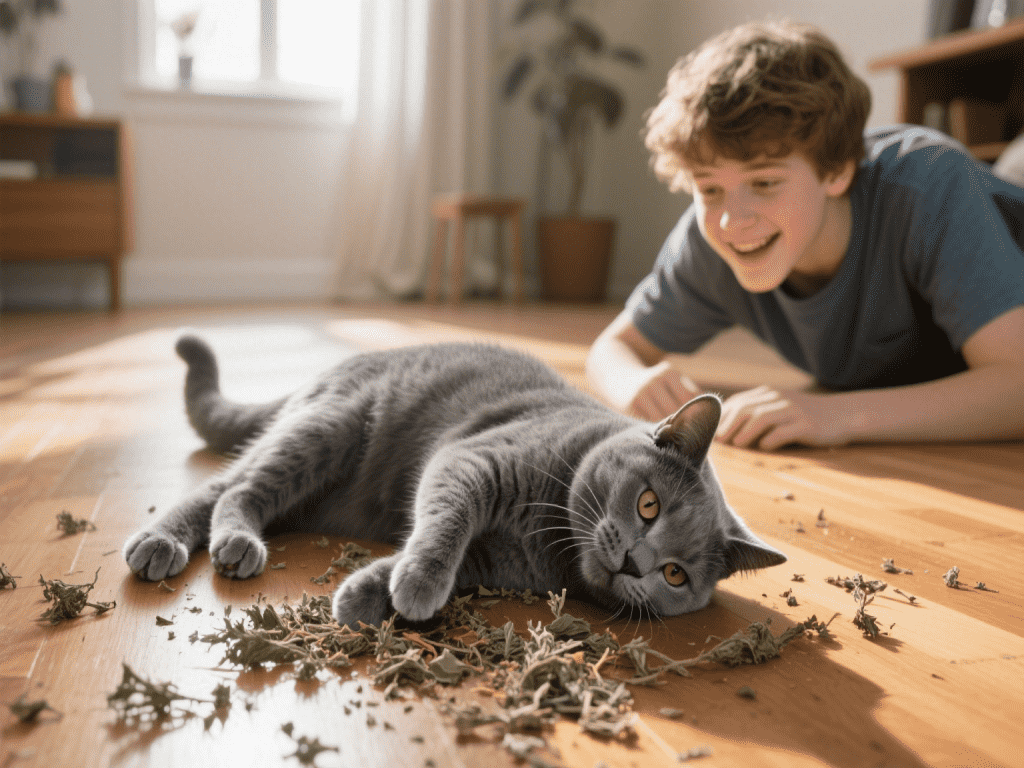
If you’ve ever watched your cat roll ecstatically across the rug after a sprinkle of catnip, you’ve witnessed a remarkable botanical phenomenon. Yet nearly 30–50% of cats show no reaction at all. With a background in animal behavior and countless cat‑nip testing sessions, I’ll guide you through the chemistry, genetics, and best practices for introducing catnip, ensuring safe, enriching fun for every whiskered compatriot.
1. Nepetalactone: Nature’s Cheerleader
Catnip (Nepeta cataria) contains nepetalactone, a volatile oil that mimics feline pheromones:
Binding to Olfactory Receptors:
Inhaled nepetalactone binds to receptors in the nasal tissue, triggering a cascade in the olfactory bulb and amygdala—centers for emotion and behavior.Behavioral Responses:
Roll & Rub: Pleasure receptors light up, leading to euphoria‑like behaviors.
Hyperactivity & Vocalization: Some cats sprint, chirp, or yowl under its influence.
Relaxation: Others become calm and serene, often purring.
Effects are transient—lasting 5–15 minutes before cats enter a refractory period of up to an hour.
2. Genetic Gatekeepers: Why Some Cats Are Immune
Sensitivity to catnip is hereditary, with an autosomal dominant gene determining response:
Non‑Responders:
Kittens under 3–6 months and many adult large‑felines (tigers, lions) lack the receptor expression or neuromodulatory pathways.Breed Variations:
Siamese and Bengals often exhibit strong reactions, whereas Persians and Exotic Shorthairs may be less sensitive.
Breeder’s Note: Early, repeated exposure in kittens can sometimes elicit a response, but genetics remain the overriding factor.
3. Safe and Enriching Catnip Use
Quality & Freshness:
Use high‑grade, organic dried catnip or toys stuffed with fresh leaves. Store airtight to preserve potency.Controlled Exposure:
Sprinkle on scratching posts or puzzle feeders rather than carpets to contain the mess.Frequency:
Limit sessions to 2–3 times weekly to prevent habituation.
Consider rotating with other cat-safe herbs (silvervine, valerian root) to diversify stimulation.
4. Alternative Enrichments for Non‑Responders
For cats indifferent to catnip, try:
Silvervine (Actinidia polygama):
Often more potent, affecting up to 80% of cats.Valerian Root:
Sedative properties can calm anxious felines.Interactive Toys & Puzzles:
Food‑dispensing balls and laser chasers promote exercise and mental engagement.
Conclusion
Catnip remains one of the most accessible—and most delightful—forms of feline enrichment, yet its magic hinges on genetics and proper use. By understanding nepetalactone’s effects, managing exposure, and exploring alternatives, you’ll ensure every cat in your life enjoys appropriate, safe stimulation. Next time you cradle that crinkly catnip mouse, you’ll appreciate the intricate dance of chemistry and evolution behind each ecstatic roll.









Comments on " The Catnip Effect: Why Some Cats Go Wild While Others Walk Away" :